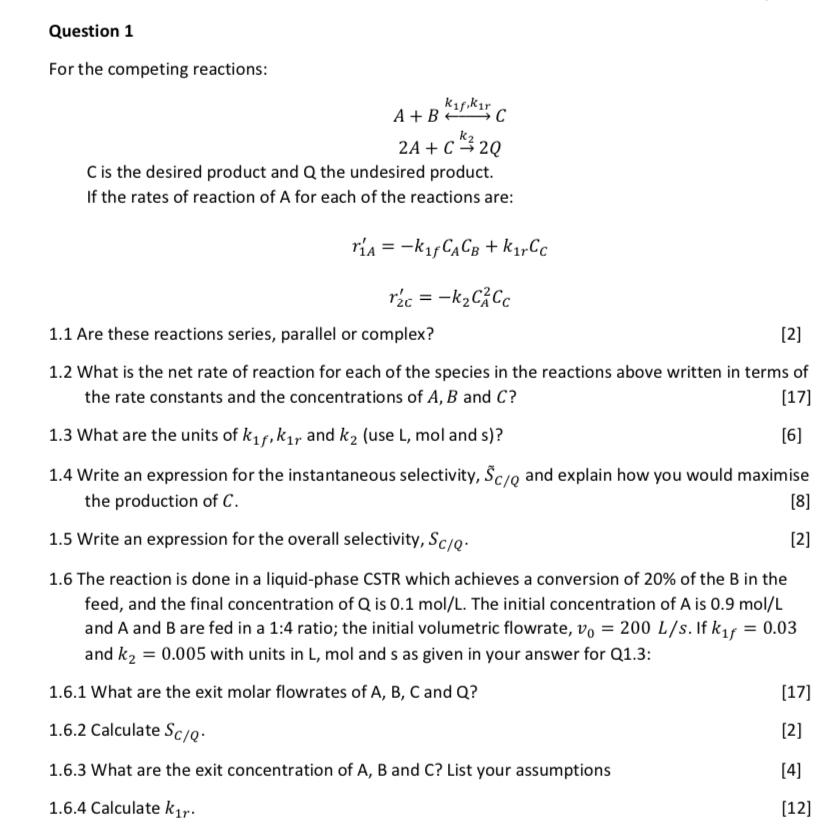Please help urgently!
For the competing reactions: A+Bk1f,k1rC2A+Ck22Q C is the desired product and Q the undesired product. If the rates of reaction of A for each of the reactions are: r1A=k1fCACB+k1rCCr2C=k2CA2CC 1.1 Are these reactions series, parallel or complex? 1.2 What is the net rate of reaction for each of the species in the reactions above written in terms of the rate constants and the concentrations of A,B and C ? 1.3 What are the units of k1f,k1r and k2 (use L,mol and s )? 1.4 Write an expression for the instantaneous selectivity, S~C/Q and explain how you would maximise the production of C. 1.5 Write an expression for the overall selectivity, SC/Q. 1.6 The reaction is done in a liquid-phase CSTR which achieves a conversion of 20% of the B in the feed, and the final concentration of Q is 0.1mol/L. The initial concentration of A is 0.9mol/L and A and B are fed in a 1:4 ratio; the initial volumetric flowrate, v0=200L/s. If k1f=0.03 and k2=0.005 with units in L,mol and s as given in your answer for Q1.3: 1.6.1 What are the exit molar flowrates of A,B,C and Q? 1.6.2 Calculate SC/Q. 1.6.3 What are the exit concentration of A, B and C? List your assumptions [4] For the competing reactions: A+Bk1f,k1rC2A+Ck22Q C is the desired product and Q the undesired product. If the rates of reaction of A for each of the reactions are: r1A=k1fCACB+k1rCCr2C=k2CA2CC 1.1 Are these reactions series, parallel or complex? 1.2 What is the net rate of reaction for each of the species in the reactions above written in terms of the rate constants and the concentrations of A,B and C ? 1.3 What are the units of k1f,k1r and k2 (use L,mol and s )? 1.4 Write an expression for the instantaneous selectivity, S~C/Q and explain how you would maximise the production of C. 1.5 Write an expression for the overall selectivity, SC/Q. 1.6 The reaction is done in a liquid-phase CSTR which achieves a conversion of 20% of the B in the feed, and the final concentration of Q is 0.1mol/L. The initial concentration of A is 0.9mol/L and A and B are fed in a 1:4 ratio; the initial volumetric flowrate, v0=200L/s. If k1f=0.03 and k2=0.005 with units in L,mol and s as given in your answer for Q1.3: 1.6.1 What are the exit molar flowrates of A,B,C and Q? 1.6.2 Calculate SC/Q. 1.6.3 What are the exit concentration of A, B and C? List your assumptions [4]







